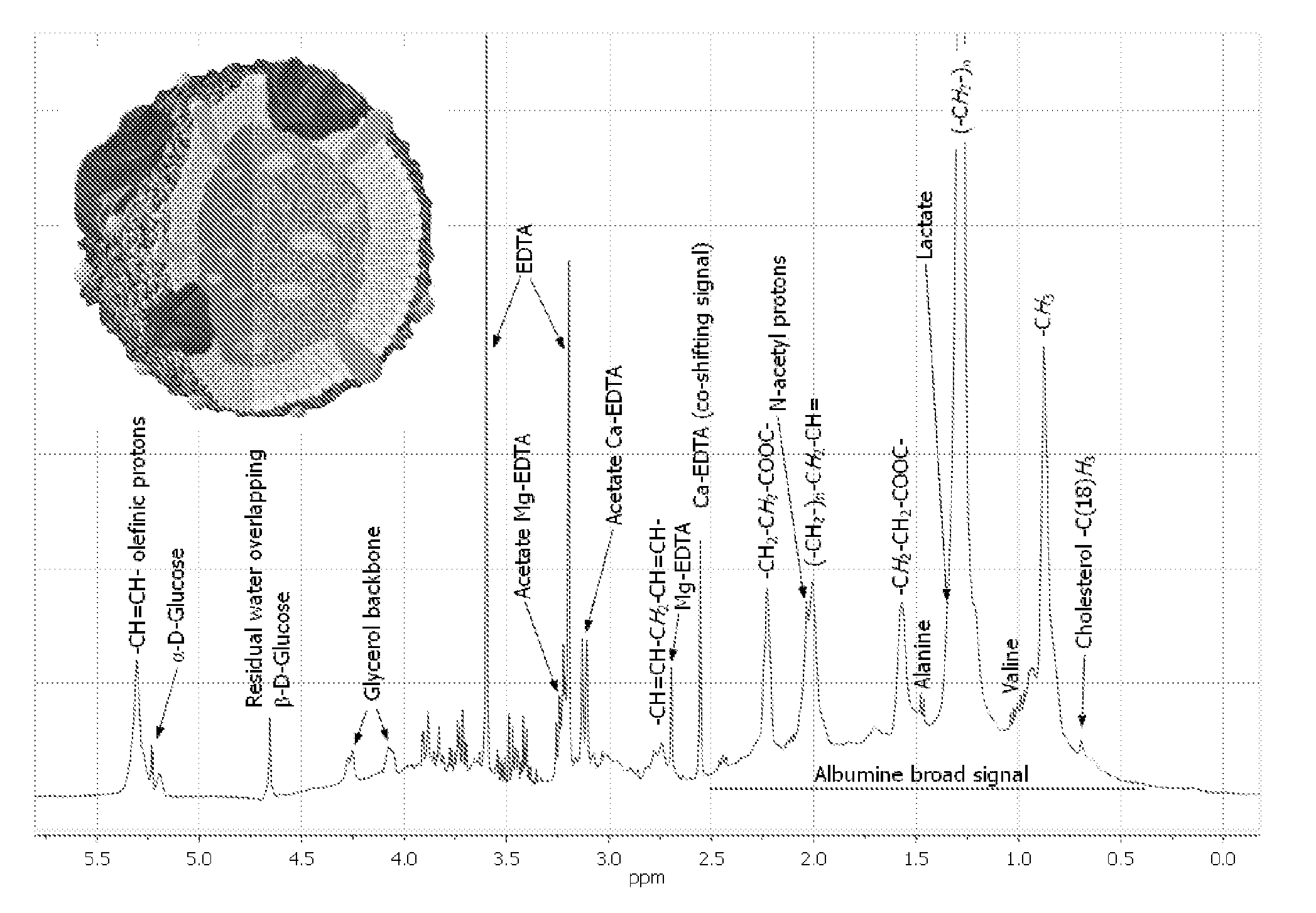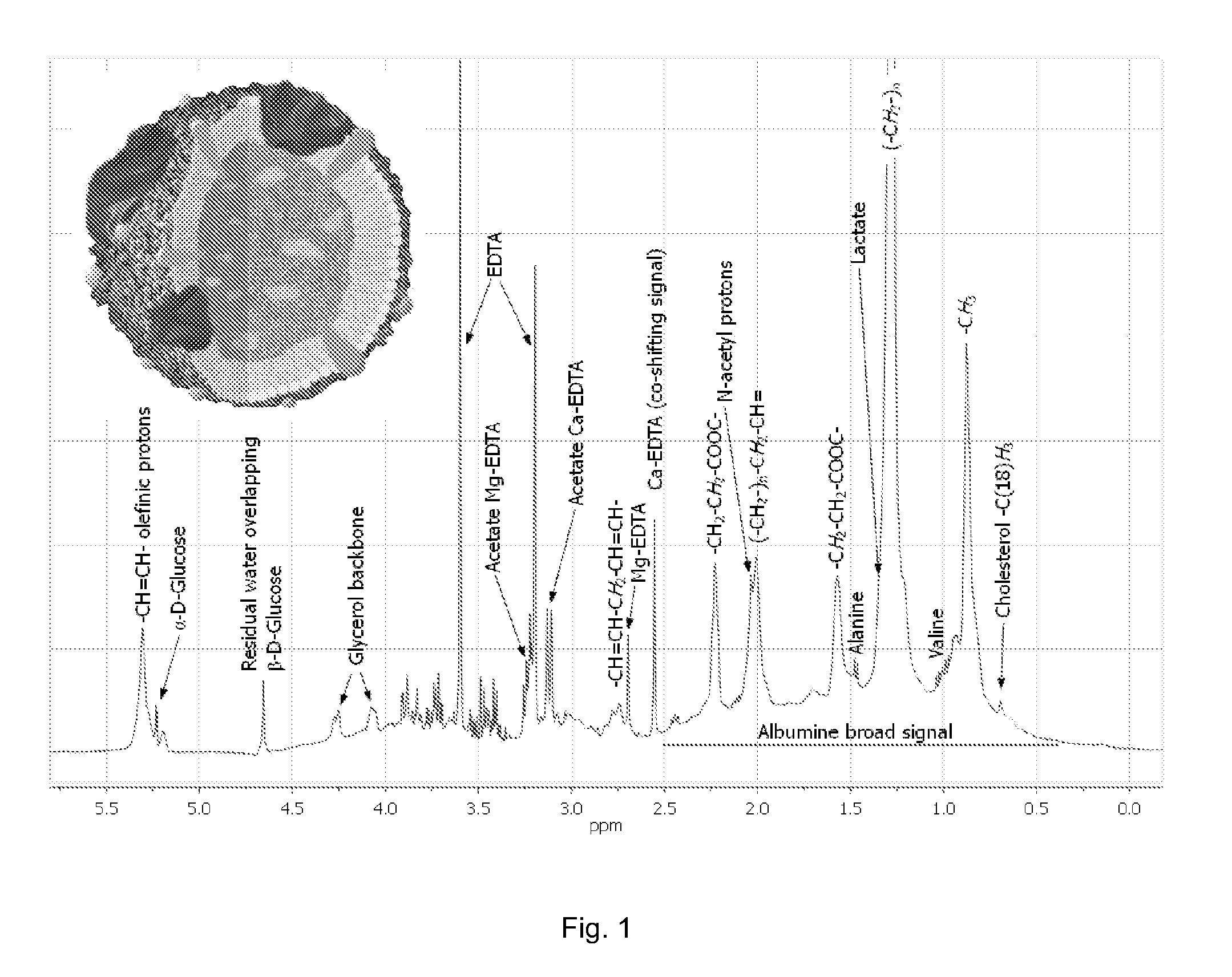Method for prediction of lipoprotein content from nmr data
a technology of lipoprotein and nmr data, applied in the field of lipoprotein content prediction from nmr data, can solve the problems of not clear if, method is not able to fully differentiate between the different lipoprotein entities, and how well the classes may be predicted and differentiated
- Summary
- Abstract
- Description
- Claims
- Application Information
AI Technical Summary
Benefits of technology
Problems solved by technology
Method used
Image
Examples
example
Nuclear Magnetic Resonance and Chemometrics Predicts Chylomicron TAGs in Human Blood
[0070]Most of our current knowledge on the link between lipids, lipoprotein metabolism and cardiovascular diseases (CVD) development rely on observations made on fasting individuals. Ironically, we spend the vast majority of our time in a non-fasting postprandial state and recent studies indicate the existence of a relation between the risk for developing CVD and postprandial triacylglycerols (TAGs) (1). When fat is absorbed in the human body it enters the circulation in the form of intestinally derived TAG-rich lipoproteins, essentially chylomicrons, usually within about 15 minutes after finishing a meal. The chylomicrons are released by exocytosis in the villi of the small intestine, and are then secreted into the bloodstream at the thoracic duct's connection with the left subclavian vein. Chylomicrons are large micellar lipoproteins, having a diameter of 75 to 1200 nm, and are primarily composed o...
PUM
 Login to View More
Login to View More Abstract
Description
Claims
Application Information
 Login to View More
Login to View More - R&D
- Intellectual Property
- Life Sciences
- Materials
- Tech Scout
- Unparalleled Data Quality
- Higher Quality Content
- 60% Fewer Hallucinations
Browse by: Latest US Patents, China's latest patents, Technical Efficacy Thesaurus, Application Domain, Technology Topic, Popular Technical Reports.
© 2025 PatSnap. All rights reserved.Legal|Privacy policy|Modern Slavery Act Transparency Statement|Sitemap|About US| Contact US: help@patsnap.com



